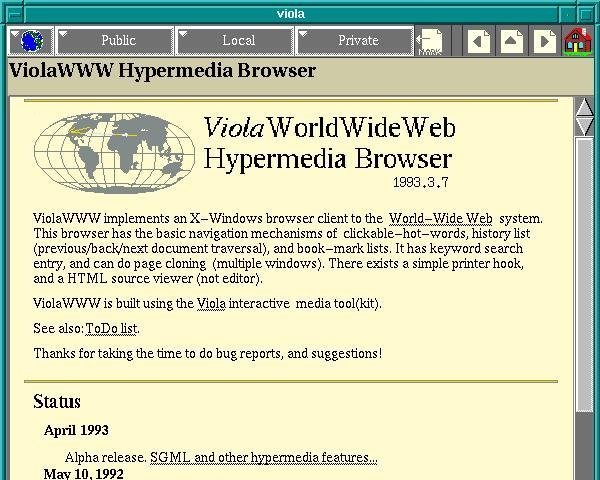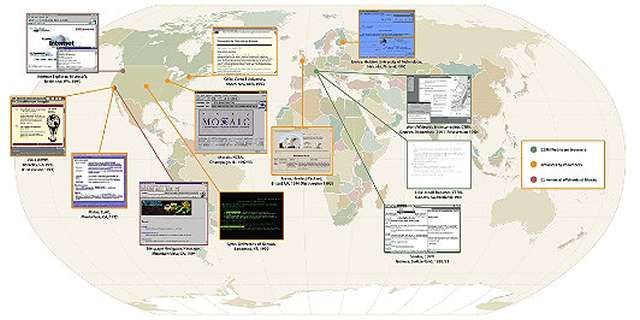
Before Netscape: The forgotten Web browsers of the early 1990s

When Tim Berners-Lee arrived at CERN, Geneva’s celebrated European Particle Physics Laboratory in 1980, the enterprise had hired him to upgrade the control systems for several of the lab’s particle accelerators. But almost immediately, the inventor of the modern webpage noticed a problem: thousands of people were floating in and out of the famous research institute, many of them temporary hires.
“The big challenge for contract programmers was to try to understand the systems, both human and computer, that ran this fantastic playground,” Berners-Lee later wrote. “Much of the crucial information existed only in people’s heads.”
So in his spare time, he wrote up some software to address this shortfall: a little program he named Enquire. It allowed users to create “nodes”—information-packed index card-style pages that linked to other pages. Unfortunately, the PASCAL application ran on CERN’s proprietary operating system. “The few people who saw it thought it was a nice idea, but no one used it. Eventually, the disk was lost, and with it, the original Enquire.”
Some years later Berners-Lee returned to CERN. This time he relaunched his “World Wide Web” project in a way that would more likely secure its success. On August 6, 1991, he published an explanation of WWW on the alt.hypertext usegroup. He also released a code library, libWWW, which he wrote with his assistant Jean-François Groff. The library allowed participants to create their own Web browsers.
“Their efforts—over half a dozen browsers within 18 months—saved the poorly funded Web project and kicked off the Web development community,” notes a commemoration of this project by the Computer History Museum in Mountain View, California. The best known early browser was Mosaic, produced by Marc Andreesen and Eric Bina at the National Center for Supercomputing Applications (NCSA).
Mosaic was soon spun into Netscape, but it was not the first browser. A map assembled by the Museum offers a sense of the global scope of the early project. What’s striking about these early applications is that they had already worked out many of the features we associate with later browsers. Here is a tour of World Wide Web viewing applications, before they became famous.
The CERN browsers
Tim Berners-Lee’s original 1990 WorldWideWeb browser was both a browser and an editor. That was the direction he hoped future browser projects would go. CERN has put together a reproduction of its formative content. As you can see in the screenshot below, by 1993 it offered many of the characteristics of modern browsers.
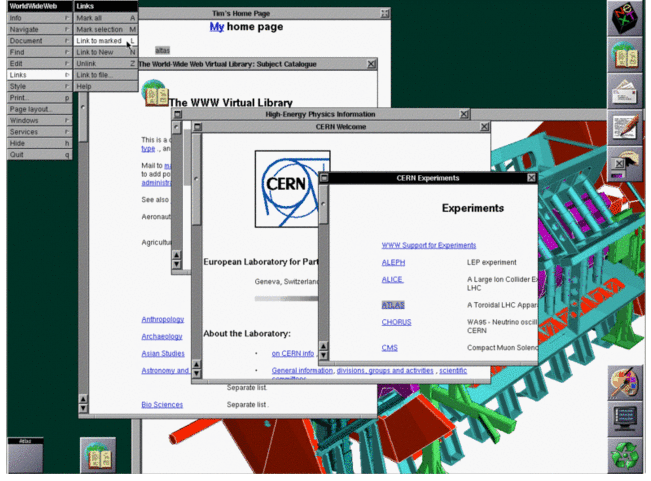
The software’s biggest limitation was that it ran on the NeXTStep operating system. But shortly after WorldWideWeb, CERN mathematics intern Nicola Pellow wrote a line mode browser that could function elsewhere, including on UNIX and MS-DOS networks. Thus “anyone could access the web,” explains Internet historian Bill Stewart, “at that point consisting primarily of the CERN phone book.”
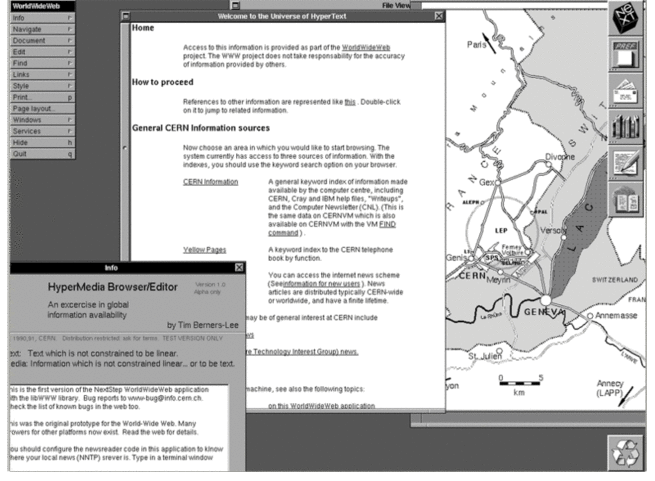
Erwise
Erwise came next. It was written by four Finnish college students in 1991 and released in 1992. Erwise is credited as the first browser that offered a graphical interface. It could also search for words on pages.
Berners-Lee wrote a review of Erwise in 1992. He noted its ability to handle various fonts, underline hyperlinks, let users double-click them to jump to other pages, and to host multiple windows.
“Erwise looks very smart,” he declared, albeit puzzling over a “strange box which is around one word in the document, a little like a selection box or a button. It is neither of these—perhaps a handle for something to come.”
So why didn’t the application take off? In a later interview, one of Erwise’s creators noted that Finland was mired in a deep recession at the time. The country was devoid of angel investors.
“We could not have created a business around Erwise in Finland then,” he explained. “The only way we could have made money would have been to continue our developing it so that Netscape might have finally bought us. Still, the big thing is, we could have reached the initial Mosaic level with relatively small extra work. We should have just finalized Erwise and published it on several platforms.”
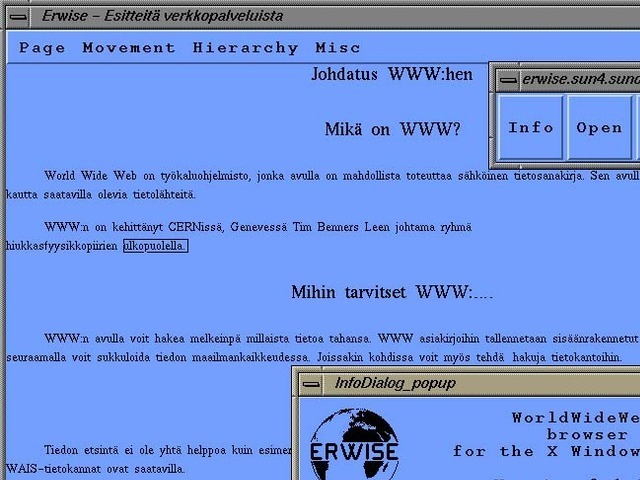
ViolaWWW
ViolaWWW was released in April of 1992. Developer Pei-Yuan Wei wrote it at the University of California at Berkeley via his UNIX-based Viola programming/scripting language. No, Pei Wei didn’t play the viola, “it just happened to make a snappy abbreviation” of Visually Interactive Object-oriented Language and Application, write James Gillies and Robert Cailliau in their history of the World Wide Web.
Wei appears to have gotten his inspiration from the early Mac program HyperCard, which allowed users to build matrices of formatted hyper-linked documents. “HyperCard was very compelling back then, you know graphically, this hyperlink thing,” he later recalled. But the program was “not very global and it only worked on Mac. And I didn’t even have a Mac.”
But he did have access to UNIX X-terminals at UC Berkeley’s Experimental Computing Facility. “I got a HyperCard manual and looked at it and just basically took the concepts and implemented them in X-windows.” Except, most impressively, he created them via his Viola language.
One of the most significant and innovative features of ViolaWWW was that it allowed a developer to embed scripts and “applets” in the browser page. This anticipated the huge wave of Java-based applet features that appeared on websites in the later 1990s.
In his documentation, Wei also noted various “misfeatures” of ViolaWWW, most notably its inaccessibility to PCs.
- Not ported to PC platform.
- HTML Printing is not supported.
- HTTP is not interruptable, and not multi-threaded.
- Proxy is still not supported.
- Language interpreter is not multi-threaded.
“The author is working on these problems… etc,” Wei acknowledged at the time. Still, “a very neat browser useable by anyone: very intuitive and straightforward,” Berners-Lee concluded in his review of ViolaWWW. “The extra features are probably more than 90% of ‘real’ users will actually use, but just the things which an experienced user will want.”
